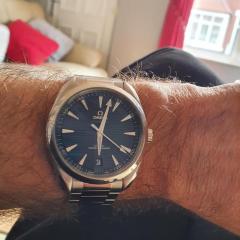Reducing pivot hole diameters with a Staking Tool
-
Recently Browsing
- No registered users viewing this page.
-
Topics
-
Posts
-
By Neverenoughwatches · Posted
I think we've talked about this before, using a new mainspring to initially overcome the effects of more movement friction than there should be. The aim is to reduce all going friction not to push through the friction with more torque, that in the long run will create more wear. -
Sensible precautions @rjenkinsgb. I remember as a lad, my mate's dad ran a garage. I can clearly remember watching him change break pads. He used an airline to blow the dust out, (when pads used asbestos), and we used to practically bathe in "carbon tet". But then he did smoke about 40 cigs a day. Makes me shudder to think about it.








Recommended Posts
Join the conversation
You can post now and register later. If you have an account, sign in now to post with your account.
Note: Your post will require moderator approval before it will be visible.